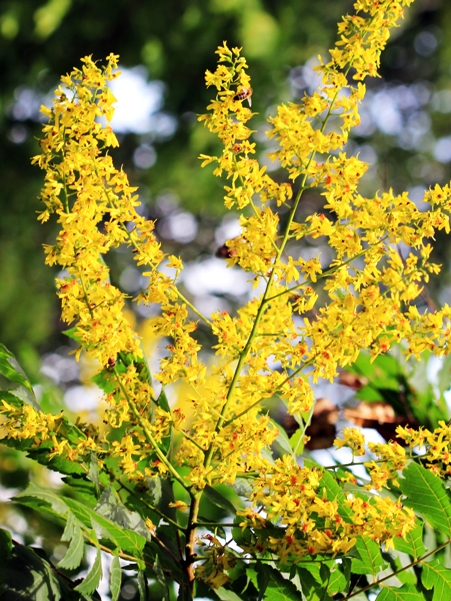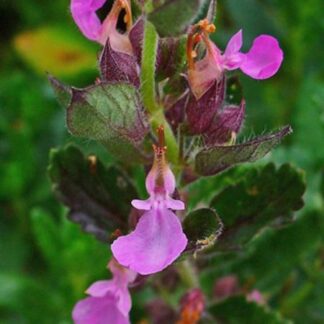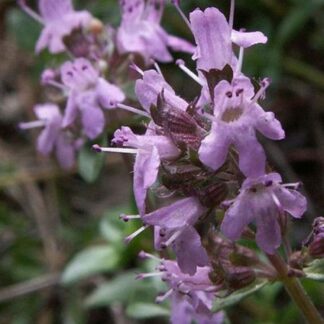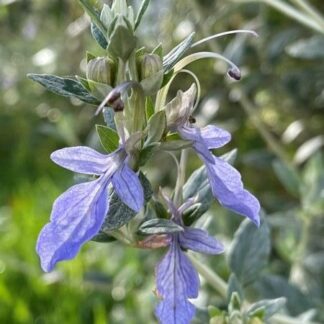Description
Sapindaceae (family name)
Forage for Pollinators: Heavily worked by Honeybees and Short-tongued Bumblebees for Nectar, and also but not so much for Pollen.
Flowering Time: July, August
Growing Information: An elegant, slender small to medium deciduous tree growing to 8-12m (26-39 feet) high by 8m wide reaching full height in 20-50 years. It is a pest-tolerant specimen tree, also resistant to honey-fungus, and (as if that isn’t enough to make you want one of these trees) it is also drought-resistant, liking areas with long, hot summers. New growth dislikes late spring frosts when young leaves are out, hence why it is a good idea to plant in a sheltered south or west-facing site, and avoiding frost-pockets. It prefers well-drained or moist but well-drained soils of any pH and any type and full sun in West or South-facing aspect, with some shelter from wind. Leaves are pinnate; pink-coloured in spring, and in summer become large. The panicles of yellow flowers, with just four petals each, are conspicuous and are followed in autumn by the bladdery seed-pods which ripen from green to orange and pink. Native to China. Hardy to between minus 10 and minus 15 ◦ C, though its leaves are sensitive to late and hard frost in spring, but the tree recovers from this set-back within a few weeks. The flowers have medicinal use for conjunctivitis, and are used as a yellow dye, while the leaves are used as a black dye. Seeds are used for bead-making.



